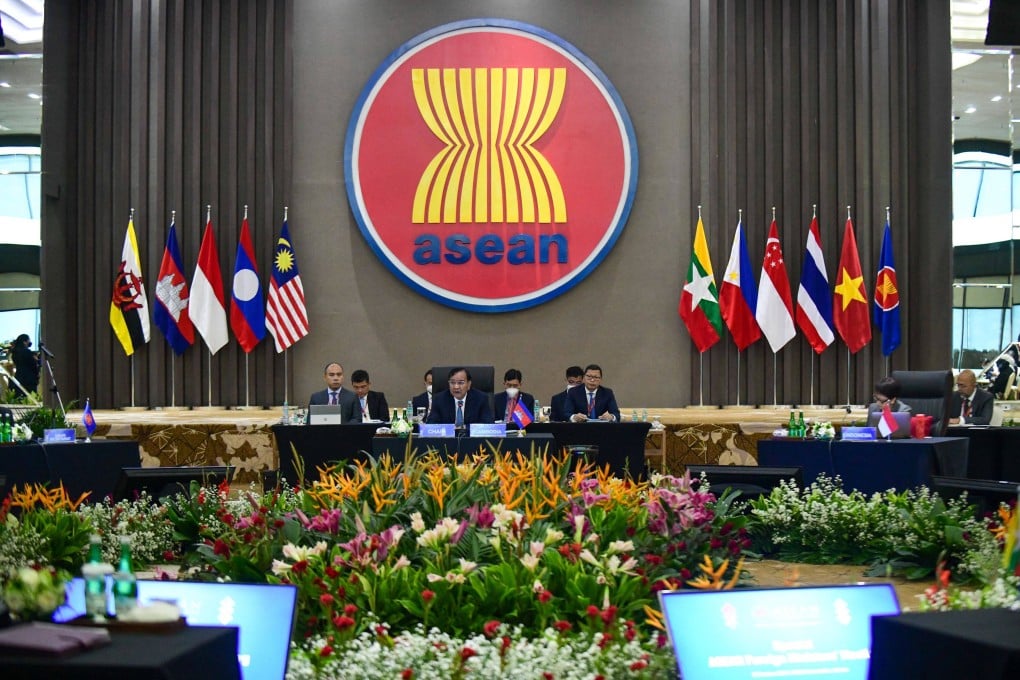Advertisement
Myanmar to top Asean summit agenda as G20 and Apec draw big powers to region
- Myanmar expected to top agenda at summit as Asean faces growing calls to quickly address growing violence in country
- Meeting will be a chance for bloc to demonstrate its convening power, and engage G20 and Apec participants to ‘bring about a diffusion of tensions’, analyst says
Reading Time:4 minutes
Why you can trust SCMP
5

Dewey Simin Singapore
Southeast Asia’s territorial disputes with Beijing in the South China Sea are likely to take a back seat when officials gather this week amid growing violence in military-ruled Myanmar and heightened Sino-US tensions, analysts have said.
Top diplomats from the 10-member Association of Southeast Asian Nations (Asean) are set to convene in the Cambodian capital of Phnom Penh for an annual summit, which is also expected to draw world leaders to the region.
The meeting often takes centre stage in Southeast Asia’s year-end diplomatic bustle but this time, it would wrestle for attention with other high-profile forums, including the G20 and Asia-Pacific Economic Cooperation (Apec) summits in Bali and Bangkok, respectively.
Advertisement
All eyes are on a possible face-to-face meeting between US President Joe Biden and Chinese leader Xi Jinping on the Indonesian island, a likely highlight of the nine-day stretch of back-to-back summitry.
Still, Myanmar – which has been plunged into chaos since military leaders seized control in a coup last February – would top the agenda at the Asean summit, which kicks off on November 10.
Advertisement
“There is a sense that [countries] are losing patience with Myanmar,” said Dylan Loh, an assistant professor in foreign policy at Nanyang Technological University (NTU).
Advertisement
Select Voice
Choose your listening speed
Get through articles 2x faster
1.25x
250 WPM
Slow
Average
Fast
1.25x